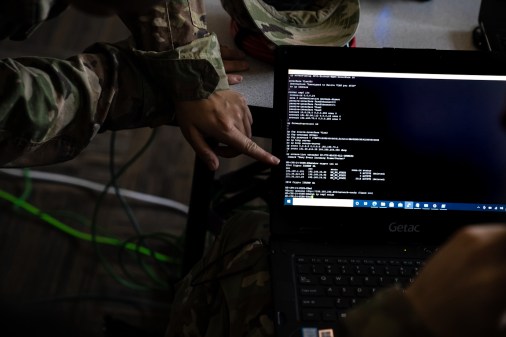Tech, cyber prioritized in DOD’s new industrial base strategy

The Pentagon’s new National Defense Industrial Strategy (NDIS) incorporates a number of actions that will drive the department to apply artificial intelligence and advanced analytics to monitor its vast supply chain of industrial assets — and strengthen internal and external cybersecurity pursuits to protect it.
Department officials released the highly anticipated, 60-page document on Thursday.
“The current and future strategic environment requires immediate, comprehensive, and decisive action in strengthening and modernizing our defense industrial base ecosystem to ensure the security of the United States and our allies and partners. As this strategy makes clear, we must act now,” Deputy Defense Secretary Kathleen Hicks wrote in the foreword.
The strategy’s introduction marks “the first of its type to be produced by the” DOD, according to officials. Broadly, it presents “four long-term priorities to serve as guiding beacons for industrial action and resource prioritization in support of the development of” an industrial ecosystem for national defense that is “dynamic, responsive, state-of-the-art, resilient, and a deterrent to our adversaries.”
To accomplish those ambitious aims, the NDIS sets explicit actions to be pursued by the Pentagon across four critical areas: resilient supply chains, workforce readiness, flexible acquisition, and “economic deterrence.”
Multiple actions assigned across those areas push the department to lean on AI, data analytics technologies and cybersecurity tools as it strives to modernize its industrial base.
For instance, under “actions to achieve resilient supply chains” the Pentagon lists leveraging data analytics to “improve sub-tier visibility to identify and minimize strategic supply chain risks and to manage disruptions proactively.”
During a press briefing at the Pentagon Thursday, following the new strategy’s release, DOD’s Assistant Secretary of Defense for Industrial Base Policy Laura Taylor-Kale and Acting Principal Deputy Assistant Secretary of Defense for Industrial Base Policy Halimah Najieb-Locke explained that, in meeting this intent, the agency is pulling together existing efforts that are already unfolding.
One of those pursuits involves the making of a new Supply Chain Mapping Tool for the department to analyze supplier data for 110 different weapon systems.
“[That mapping model] is getting down into the sub-tier level of our supply chains — understanding where there are vulnerabilities, such as failures or choke points,” that make sense for targeted mitigation, Najieb-Locke said.
The NDIS also states that the department will invest in research-and-development efforts that prioritize “advancements in communication technologies, data analytics, and artificial intelligence to improve coordination and decision-making” that can help enhance interoperability among different in-use platforms.
Officials further plan to seek opportunities to expand the Defense Innovation Unit (DIU) and other hubs that “speed up the development and production of emerging technologies,” according to the document.
Beyond that, the guidance urges the department to mitigate cybersecurity costs of entry to work in the defense industrial ecosystem and to reduce barriers to entry for small and medium-sized businesses, including impediments associated with implementing and maintaining cybersecurity.
Among a range of other inclusions on cybersecurity, the strategy calls on the Pentagon to “build upon and improve current regulations, policies, requirements, programs, and other efforts to address challenges and evolving cyber threats,” which it names directly.
“This effort will be specifically guided by the DOD DIB Cybersecurity Strategy,” the NDIS notes.
Little is known publicly about that impending cyber-guiding document, but a Pentagon spokesperson told DefenseScoop on Wednesday that DOD Chief Information Officer John Sherman is targeting February for its release.
At the press briefing on Thursday, Taylor-Kale and Najieb-Locke told DefenseScoop that their team has been and is coordinating closely with DOD’s CIO shop to inform the accompanying cybersecurity strategy.
The two officials also confirmed that they plan to release an implementation plan to guide the execution of the two dozen actions in the NDIS — in both classified and unclassified versions — this spring.
The intention behind those is to essentially generate what they said would be a prioritized list of tasks to actualize the strategy.
Editor’s note, 1/11/2024 at 3:40 p.m.: This report was updated with additional information from a Pentagon press briefing held after the initial story was published.






